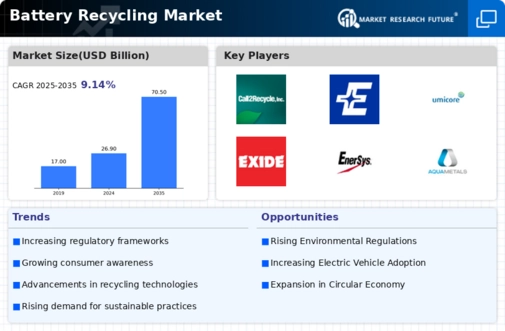Market Trends
Key Emerging Trends in the Battery Recycling Market
This market is characterized by several remarkable trends representing the combination of environmental awareness, technological innovations and rising demand for electric vehicles along with renewable energy alternatives. One of the most noticeable trends is circular economy development whereby, as much waste as possible should be avoided and resources reuse. Battery recycling is essential to this trend, allowing valuable materials like lithium cobalt and nickel back into the supply chain. E-waste issues have been giving rise to more awareness on the part of battery recycling industry that requires an environmentally conscious and responsible disposal options. Factors that are impacting the market drivers in battery recycling include rapid growth of electric vehicles. The development of electric vehicles leads to the growing production and use volumes along with higher generated waste amount. Rapid growth of the electric vehicle market has stimulated battery technology and recycling processes for effective management from increasing end-of life batteries. With governments across the world striving to achieve high targets of electric vehicle adoption, battery recycling market is expected to play a vital role in guaranteeing sustainable wastes management and resource recovery. Technological developments are changing the landscape of battery recycling. There are emerging innovative processes, such as hydrometallurgical and pyrometallurgy. Similarly, advanced sorting and separation technologies emerge to cater for more effective recovery of valuable materials facilitating higher recycling rates. Not only do these technological trends make it cheaper to recycle batteries, but they also reduce the environmental footprint of recycling compared to previous processes. Besides making contributions to the dynamics of battery recycling market, consumer electronics industry The continuing progress of smartphones, laptops and other electronic gizmos triggers the rise in battery disposal from those devices. This trend creates demand for an effective and scalable battery recycling plan. Manufacturers and retailers are also more active in promoting responsible disposal practices, which guide consumer behavior and lead to recycling culture within the electronics supply chain. Another significant trend impacting the battery recycling market is with increasing implementation of energy storage systems. The market for batteries used in grid-scale energy storage applications is growing with increased demand. This results in new challenges and opportunities for the recycling technologies to deal with various battery chemistries and designs.












Leave a Comment